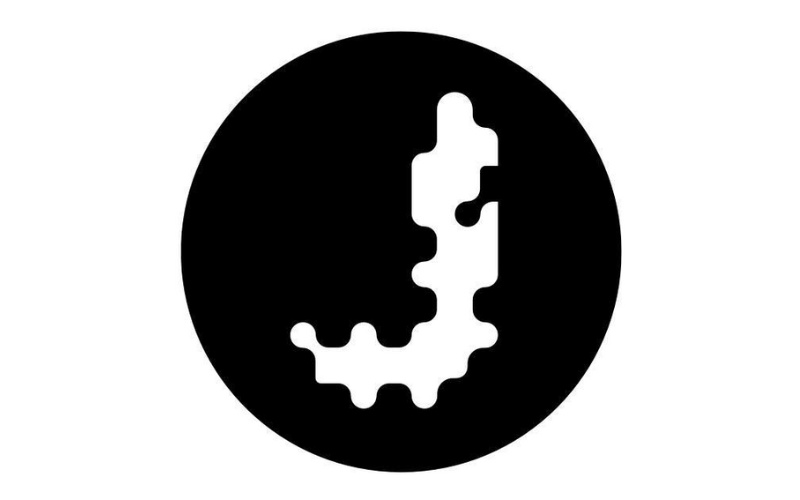You use one or more web
servers whenever you go online, whether it's to check social media or read this
post. These serve as the link that connects you to the website you're browsing
and are a crucial part of the modern internet.
Every time a web browser
requests content from a website for business, a web server assists in storing
and delivering that content. Depending on the type of request, this content may
comprise pictures, text, technical data, videos, and other things.

In this article, we’re going
to explore the basic concept of a web server, types of web server and how it
functions.
What
is a web server?
A web server can be either
hardware or software, and it receives data from other networked clients by
sending HTTP requests.
The main goal of web servers
is to deliver the requested information in the form of pics, text, or videos
that are shown on the web browser that many customers are viewing.
In addition to providing
HTTP, web servers also offer SMTP and FTP, which are mostly used for emailing,
storing data, and file transfers.
The transfer aids in the
data interchange between various devices and only takes place when the web
server hardware is connected to the internet. The responsibility of the web
server is to control user access to content.
To access the info on the
internet, there are numerous filters and constraints. You can access the
information if you are a server's authorized user.
To display the data, the web
server uses a client-server architecture. The webserver software is a must for
hosting websites on any website.
Web
server architecture
The design of a web server
is referred to as its architecture. The web server architecture serves as the
foundation for their development, design, and deployment. The architectural
layout defines each and every component that is necessary for a web server to
offer activities and services that are based on web servers.
The web server architecture
specifies a number of parameters, including:
- the server's physical
capabilities. Storage, memory, and processing power are all included.
- the performance and
general quality of the server. Throughput, latency, and minimal memory usage
are examples of this.
- the levels of
application. These comprise the various kinds of apps that are installed on the
server.
- the supported
operating system
- the computer program
- connectivity to a
network or the internet
Features of web
servers
The majority of web servers
provide the following common functionalities in addition to supporting HTTP
protocols to handle incoming requests and responses:
🔘 Related: What are the different types of web servers?
➕ Logging
files
Log files record every
action or event that web servers take, including request, security, and error
logs. Whenever a web server gets a fresh request, a line of text gets added to
the log.
➕ Authentication
Many servers provide this
option before allowing a user to access a website's resources fully or
partially. When a login and password are needed, authentication features
frequently include authorization requests.
➕ Bandwidth
restriction
The volume of data that a
web server can send or process at any given time is known as bandwidth. To
prevent a network from becoming overloaded and to enable the delivery of files
without interruption, bandwidth limitation regulates the rate of responses.
➕ Storage
space
whether a web server is
capable of hosting a website is determined by the quantity of disk space
available to store files.
➕ Programming
language
The kind of code used to
create programs that a server executes is known as a programming language.
Examples of well-known programming languages are PHP and Python, which are also
referred to as server-side scripting languages.
➕ Uptime
The amount of time a web
server is available to handle requests and deliver files is measured by the
server uptime.
The uptime of a server also
has an impact on the uptime of a hosted website. A 99.9% assurance is the
benchmark in the industry.
How
does a web server work?
All types of web servers use
a client-server model. In this setup, one program—also known as the client—asks
another program—the server—for a resource or service.
Web servers take the
following actions to handle requests from web clients:
1.An online user asks
access to a website's content using their web browser when they want to load
it. It's known as an HTTP request. The Domain Name System (DNS) is used to
translate the URL of the online pages so that the web browser can check through
its cache or look up the IP address of the requested website for business. This
procedure finds the web server hosting the files for the website.
2.The HTTP request is
received by the web server, which then processes it using its HTTP server.
3.Once the request is
accepted by its HTTP server, it will look through server files to find the
necessary information.
4.The web server then
sends the site files back to the browser that made the request. The website
content is then shown to the web user.
However, the HTTP server
replies to the web browser with an error message if it is unable to locate or
handle the requested files. The most frequent error is a 404, but if there are
authorization problems, a 403 error could also show up.
A 504 error happens,
however, if a web server does not promptly get a response from a different
server serving as a proxy or gateway.
What
advantages can a dedicated web server offer?
Below are some advantages of
employing a dedicated web server:
- Compared to a
personal computer acting as a web server, a dedicated web server has a larger
downtime.
- Incompatibilities
with the system, such as out-of-date software or security flaws, are uncommon
on dedicated web servers.
- Because a dedicated
web server has a dedicated IP, DNS resolution occurs more quickly.
- A support staff is
available on a dedicated web server to help website owners with technical
issues.
What
are the different types of web server?
Web servers are a critical
component of the internet's infrastructure and are responsible for making a website
for business or a web-based service accessible to people all over the world.
➡️ Apache
The most extensively used
and well-liked web server globally is Apache. The Apache Foundation creates and
maintains it as open-source software.

Since Apache is renowned for
its dependability, adaptability, and efficiency, it is frequently used to host
websites of all sizes. With a large selection of modules and plugins available
to increase its functionality, it is also extremely customizable.
Apache can be used to host
dynamic material, such as websites created with server-side programming
languages like PHP, in addition to delivering static content, such HTML pages
and photos.
Additionally, it is capable
of acting as a reverse proxy server, which routes requests received from the
internet to one or even more backend servers.
➡️ Nginx
Another well-liked
open-source web server, Nginx, is renowned for both its great performance and
minimal resource use.
It is one of the types of
web server that can also be used to cache static information for quicker
delivery to consumers. It is frequently used as a reverse proxy server,
diverting traffic to other servers and services.
High traffic websites are
frequently hosted by Nginx, which is frequently used with Apache to distribute
the load between the two servers.
The ability of Nginx to
effectively handle a big number of concurrent connections is one of its key
characteristics. It can handle requests asynchronously and has an event-driven
architecture, making it well-suited to handle heavy traffic levels of a website
for business.
➡️ Microsoft
IIS
A proprietary web server
created by Microsoft for use with the Windows operating system is called IIS
(Internet Information Services).
With support for many
different web technologies and protocols, it is a strong and feature-rich web
server. Enterprise environments frequently employ IIS, which is connected with
other Microsoft goods like Active Directory and Exchange.
IIS is widely utilized by
both large and small enterprises worldwide because of its performance and
dependability.
It is also one of the widely-liked
types of web server for programmers creating web-based apps on the Windows
platform because of how effectively it integrates with other Microsoft goods,
like the.NET framework.
➡️ Lighttpd
A free and open-source web
server called Lighttpd was created to be small, quick, and effective. Because
it is written in C language and has a small memory footprint, it is a good
option for hosting busy websites on servers with limited resources.
One of Lighttpd's primary
characteristics is its modular architecture, which enables users to quickly
alter and expand the server's capabilities.
Additionally, it can be set
up to operate with external authentication modules and includes built-in
support for SSL/TLS.
The security characteristics
of Lighttpd are well-known. It can be set to use access restrictions to
prohibit illegal access to specific server regions and supports chroot jailing,
which separates the server from the rest of the system.
➡️ Jigsaw
The World Wide Web
Consortium (W3C) created the web server Jigsaw as a reference implementation of
the HTTP/1.1 protocol.
For programmers curious
about HTTP protocols and web server technology, Jigsaw is still a popular
option.
Jigsaw's modular design,
which enables customers to easily adapt and increase the server's capability,
is one of its primary benefits.

CGI, server-side programming
languages like PHP as well as Python, and SSL/TLS encryption are just a few of
the features it provides. Additionally, it includes built-in support for
virtual hosting, which enables the hosting of numerous websites on a single
server.
The majority of operating
systems, namely Linux, macOS, and Windows, support Jigsaw. It is a good option
for developers who want to learn about HTTP protocols and web server
technology, but due to its lack of active development and support, it might not
be appropriate for use in production environments.
What
distinguishes dynamic from static web servers?
Dynamic and static web
servers are the two different types of web servers.
1.The material on static
web servers cannot be updated or changed since they are fixed. It has a
computer and HTTP software. Because the server transmits the requested file to
the browser exactly as it is, it is referred to as static.
2.The web server,
software, such as a database, and application server make up the dynamic web
server. Since the application server sends updated files before sending them to
the browser, this is seen as dynamic.
🔘 Read More: TOP 11 Web Development Trends in 2022 and 2023
Conclusion
The computer that accepts
and handles user requests to access a website is known as a web server. It is
made up of both hardware—the data-carrying device—and software—the device's
operating system and the web server software.
Every website for business
needs a web server. Your website can be used as an offline file on a computer
without a web server, but it cannot be served to launch the World Wide Web.
A website's success with
digital marketing initiatives and its performance in organic search can both be
impacted by a web server. A robust and functional web server reflects the
brand's overall ability to serve users simultaneously.
To get the most out of your
web server, make sure to put security measures in place.